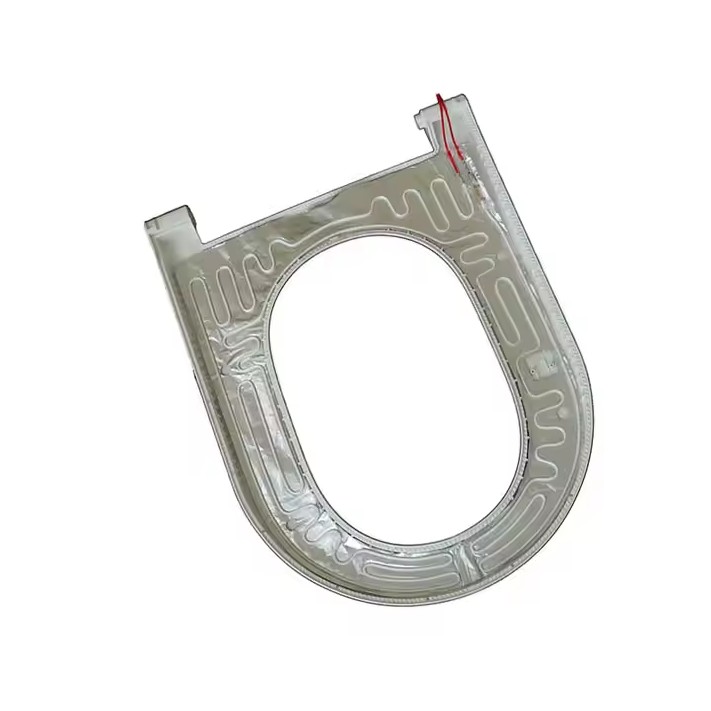In today's manufacturing industry, which highly emphasizes environmental protection and product reliability, choosing the right materials has become crucial. RoHS certified aluminum heat seal foil tape stands out as a high-performance composite material due to its unique properties. It is not merely a simple adhesive material but a functional solution that integrates sealing, shielding, and protection, widely used in applications that require compliance with strict environmental regulations and high-quality standards.
The application range of RoHS compliant aluminum foil tape is far broader than one might imagine. Its core value lies in providing a safe, environmentally friendly, and efficient solution to meet the complex needs of modern industry. In the electrical and electronics sector, it is used for shielding printed circuit boards to prevent electromagnetic interference from affecting normal equipment operation, while also sealing sensitive components against moisture and dust intrusion. In the packaging industry, particularly for food and pharmaceutical packaging that requires special gas barrier and light-blocking properties, this tape forms a strong and durable seal through heat-activated adhesive, ensuring the freshness and safety of the contents. Furthermore, in automotive manufacturing and aerospace, it is also used for harness wrapping, thermal management, and bonding and sealing of lightweight structures. Its RoHS compliance ensures that the final product meets the environmental access standards of the global market.
In the precision electronics manufacturing process, heat seal foil tape provides multiple indispensable advantages. Its most significant value lies in its excellent electromagnetic interference shielding effectiveness. The aluminum foil substrate can effectively reflect and absorb electromagnetic waves, creating a pure electrical environment for internal precision circuits, thereby ensuring signal integrity and stability of the equipment. Secondly, it provides excellent moisture and chemical corrosion resistance. Its sealing properties can isolate moisture and harmful pollutants from the air, significantly reducing the risk of circuit short circuits, oxidation, and corrosion, extending the service life of electronic products. Moreover, this tape has outstanding high-temperature resistance, able to withstand high-temperature processes such as reflow soldering without falling off or degrading, ensuring reliable performance throughout the production process. All these advantages work together to greatly enhance the quality, reliability, and market competitiveness of electronic products.
To achieve effective EMI shielding, the correct application process is key to success. First, the surface to be bonded must be thoroughly cleaned to ensure it is free of oil, dust, and any other contaminants, as any tiny impurities can severely affect the adhesive's wetting and final bond strength. Precisely cut the tape to the required size and shape based on the specific application requirements. Once preparation is complete, use a dedicated heat gun or heating equipment to evenly heat the adhesive side of the tape to activate its thermal-sensitive adhesive. When the adhesive becomes active and tacky, quickly align and apply the tape to the target position. Immediately afterward, apply uniform and sufficient pressure, using a roller or other tool to roll over it, ensuring full contact between the tape and the substrate surface and eliminating any air bubbles to form a seamless, tight bond. Finally, allow the bonded area to cool naturally to room temperature to achieve its final strength, completing a reliable and long-lasting shielding seal.
An in-depth understanding of the product's technical parameters is essential for making the right choice. The performance of RoHS certified aluminum heat seal foil tape is primarily defined by its physical and chemical properties. The thickness and purity of the substrate directly affect its mechanical strength and shielding effectiveness, with common aluminum foil thicknesses varying from tens of microns. The adhesive system on the back is the core technology, usually a specialized heat-activated coating whose activation temperature, melt viscosity, and ultimate bond strength determine the application process and final performance. The temperature resistance range is a key indicator; high-quality tapes can typically withstand continuous temperatures above 120°C and higher peak soldering temperatures for short periods. Furthermore, surface resistivity is an important electrical property that measures its conductivity and EMI shielding effectiveness, with lower values indicating better conductivity. Others include tensile strength, elongation, and resistance to various chemical solvents. All these parameters should be clearly stated in the product datasheet for engineers to carefully evaluate.
Faced with diverse application scenarios, selecting the most suitable heat-activated sealing tape requires systematic consideration. First, identify the type of substrate to be bonded—whether it is porous or non-porous—as different surface characteristics require adhesives with different formulations and activation temperatures. Secondly, evaluate the required seal strength level for the final application, whether it is for temporary holding in lightweight packaging or permanent structural bonding in heavy-duty industrial packaging. Environmental factors cannot be ignored; will the product be long-term exposed to extreme temperatures, humidity, UV light, or chemicals? These conditions determine the durability and weather resistance the tape must possess. Finally, existing application equipment and technology must be considered; the activation temperature and time of the selected tape must match the heating capacity of the existing production line to ensure application feasibility and efficiency. By comprehensively weighing these factors, one can filter out the best product that meets both technical specifications and optimized production costs.
